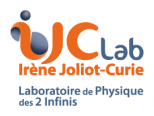A plethora of observations, attesting to the existence of the so-called magic numbers of protons and neutrons which confer special stability to the atomic nucleus (binding-energy gap, high energy of the first excited state, low excitation probability, single-particle character of the valence nucleon) and to the tendency of the nucleus to exhibit midway between magic numbers properties typical of a quantum-mechanical rotor, has shaped our description of nuclear structure and guided the development of nuclear models.
With the unprecedented development of radioactive-ion-beam facilities, one of the main research goals of our pole has been to expand these observations towards the regions of exotic nuclei and deduce the evolution of the corresponding nuclear-structure picture, using nuclear theory to link this evolution to the main components of the nucleon-nucleon interaction, or to test the predictions of different nuclear models based on ab-initio or phenomenological degrees of freedom. In order to accomplish this goal, the researchers of our pole are developping and performing state-of-the-art experiments both nationally and internationally, being involved in the research programs of major radioactive beam production facilities around the world (FLNR, GSI, ISOLDE, Jyväskylä, RIKEN, TRIUMF and others), as well as exploiting and building the next-generation French facilities ALTO and GANIL.
Our work has shed light on a number of important questions, such as the vanishing of certain magic numbers in exotic nuclei and the emergence of new ones, the onset of islands of nuclear deformation in midshell regions of the nuclear chart and the phenomenon of shape coexistence, the occurence of special types of deformation such as triaxial and reflection asymmetric, as well as the exploration of different collective modes of the nucleus such as giant resonances. Many of the properties determined in this work have also contributed to the study of astrophysical processes, in particular nucleosynthesis, either directly through the measured nuclear data or indirectly throught better constraining nuclear models, which in turn predict the properties of nuclei currently impossible to synthesize.
The performed measurements use a wide range of experimental approaches.
Low-energy techniques
Typically performed by our teams at ISOL-type facilities such as ISOLDE, IGISOL@Jyväskylä, ISAC@TRIUMF and ALTO, but also sometimes at in-flight facilities such as DESPEC/gSPEC@FAIR and RIBF@RIKEN, low-energy experiments use decay spectroscopy, laser spectroscopy, mass spectrometry and nuclear orientation to determine fundamental nuclear properties. Our teams are actively involved in different international collaborations at these facilities and contribute to their long-term experimental programs.
On the ALTO platform of Orsay, decay spectroscopy is performed on the Low Energy Branch using the BEDO setup or on the High Energy Branch using the LICORNE neutron source and the NuBall array, while a number of complementary installations are preparing for on-line commissioning with low-energy radioactive beams (LINO, POLAREX and MLLTRAP).
In addition to performing experiments at the different facilities, our teams are also deeply involved in developing the next-generation low-energy-physics instruments to be used at SPIRAL2, namely the day-1 installations which will be installed at the focal plane of S3 (SIRIUS and the S3 Low Energy Branch) and the low-energy facility DESIR.
In-flight techniques
Prompt gamma-ray spectroscopy and reaction studies are crucial both to provide complementary nuclear-structure information and in some cases to offer first data on exotic nuclei at the production frontier. The teams of our pole are performing experiments both at in-flight facilities such as RIBF@RIKEN, GANIL, Jyväskylä (combined to the recoil separators RITU and MARA), as well as ISOL facilities following post-acceleration, such as HIE-ISOLDE.
In addition, our physicists together with the IJCLab technical teams contribute substantially to the development of large detector arrays used in nuclear-physics experiments such as AGATA, PARIS and NuBall.






